Tourism: Difference between revisions
Blanchardb (talk | contribs) m Reverted edits by 203.84.184.206 to last version by 124.157.90.19 (using Huggle) |
rm uncited, not sure if grey nomads is notable enough for inclusion. |
||
| Line 209: | Line 209: | ||
{{Main|Eco-tourism}} |
{{Main|Eco-tourism}} |
||
Sustainable tourism is becoming more popular as people start to realize the devastating effects poorly planned tourism can have on communities. Receptive tourism is now growing at a very rapid rate in many developing countries, where it is often the most important economic activity in local GDP. |
Sustainable tourism is becoming more popular as people start to realize the devastating effects poorly planned tourism can have on communities. Receptive tourism is now growing at a very rapid rate in many developing countries, where it is often the most important economic activity in local GDP. |
||
===Grey nomads=== |
|||
Retirees who travel for much of the year, generally in their own continent an by vehicle, are often called "grey nomads". They often drive [[Recreational vehicles]] |
|||
yef |
|||
===Medical tourism=== |
===Medical tourism=== |
||
| Line 223: | Line 219: | ||
Also tourists are looking for an adventure when they travel, see the destination more like a local would experience it. [Private tour guides] are an excellent way to get fast insight into a country and also help locals earn an income. |
Also tourists are looking for an adventure when they travel, see the destination more like a local would experience it. [Private tour guides] are an excellent way to get fast insight into a country and also help locals earn an income. |
||
In recent years, second holidays or vacations have become more popular as people's discretionary income increases. Typical combinations are a package to the typical mass tourist resort, with a winter skiing holiday or weekend break to a city or national park. |
In recent years, second holidays or vacations have become more popular as people's discretionary income increases. {{fact}} Typical combinations are a package to the typical mass tourist resort, with a winter skiing holiday or weekend break to a city or national park. |
||
===Dark tourism=== |
===Dark tourism=== |
||
One emerging area of special interest tourism has been identified by Lennon and Foley (2000) as "dark" tourism. |
One emerging area of special interest tourism has been identified by Lennon and Foley (2000) as "dark" tourism. This type of tourism involves visits to "dark" sites such as battlegrounds, scenes of horrific crimes or acts of [[genocide]], for example [[concentration camps]]. Dark tourism poses severe ethical and moral dilemmas: should these sites be available for visitation and, if so, what should the nature of the publicity involved be. Dark tourism remains a small niche market driven by varied motivations, such as mourning, remembrance, macabre curiosity or even entertainment. Its early origins are rooted in fairgrounds and medieval fairs.<ref>Tourism Principles and Practice, C. Cooper, J. Fletcher, A. Fyall, D. Gilbert, S. Wanhill, Pearson Education, Third edition, Madrid 2005</ref> |
||
==Growth== |
==Growth== |
||
Revision as of 04:32, 13 June 2008
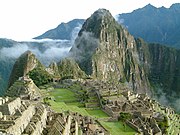
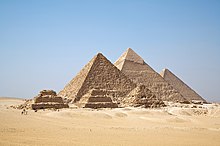

Tourism is travel for predominantly recreational or leisure purposes or the provision of services to support this leisure travel. The World Tourism Organization defines tourists as people who "travel to and stay in places outside their usual environment for not more than one consecutive year for leisure, business and other purposes not related to the exercise of an activity remunerated from within the place visited". Tourism has become a popular global leisure activity. In 2006, there were over 846 million international tourist arrivals.[1]
Tourism is vital for many countries such as Egypt, Thailand and many island nations such as Fiji, due to the large intake of money for businesses with their goods and services and the opportunity for employment in the service industries associated with tourism. These service industries include transportation services such as cruise ships and taxis, accommodation such as hotels and entertainment venues, and other hospitality industry services such as resorts.
Definition


Hunziker and Krapf, in 1941, defined tourism as "the sum of the phenomena and relationships arising from the travel and stay of non-residents, insofar as they do not lead to permanent residence and are not connected with any earning activity."[4] In 1976 the Tourism Society of England defined it as "Tourism is the temporary, short-term movement of people to destination outside the places where they normally live and work and their activities during the stay at each destination. It includes movements for all purposes." In 1981 International Association of Scientific Experts in Tourism[5] defined Tourism in terms of particular activities selected by choice and undertaken outside the home environment.
The United Nations classified three forms of tourism in 1994 in its Recommendations on Tourism Statistics: Domestic tourism, which involves residents of the given country traveling only within this country; Inbound tourism, involving non-residents traveling in the given country; and Outbound tourism, involving residents traveling in another country.
The UN also derived different categories of tourism by combining the 3 basic forms of tourism: Internal tourism, which comprises domestic tourism and inbound tourism; National tourism, which comprises domestic tourism and outbound tourism; and International tourism, which consists of inbound tourism and outbound tourism. Intrabound tourism is a term coined by the Korea Tourism Organization and widely accepted in Korea. [citation needed] Intrabound tourism differs from domestic tourism in that the former encompasses policymaking and implementation of national tourism policies.[citation needed]
Recently, the tourism industry has shifted from the promotion of inbound tourism to the promotion of intrabound tourism because many countries are experiencing tough competition for inbound tourists. Some national policymakers have shifted their priority to the promotion of intrabound tourism to contribute to the local economy. Examples of such campaigns include "See America" in the United States, "Malaysia Truly Asia" in Malaysia, "Get Going Canada" in Canada, "Wow Philippines" in the Philippines, "Uniquely Singapore" in Singapore, "100% Pure New Zealand" in New Zealand and "Incredible India" in India.
World tourism statistics and rankings
Most visited countries
The World Tourism Organization,[1] recognizes ten countries as the most visited in 2006 by number of travellers. Most are on the European continent.
| Rank | Country | Continent | International tourist arrivals (2006) |
|---|---|---|---|
| 1 | Europe | 79.1 million | |
| 2 | Europe | 58.5 million | |
| 3 | North America | 51.1 million | |
| 4 | Asia | 49.6 million | |
| 5 | Europe | 41.1 million | |
| 6 | Europe | 30.1 million | |
| 7 | Europe | 23.6 million | |
| 8 | North America | 21.4 million | |
| 9 | Europe | 20.3 million | |
| 10 | Europe | 20.1 million |
International tourism receipts
The World Tourism Organization,[1] recognizes the following 10 countries as the top ten tourism earners for the year 2006. It is noticeable that most of them are on the European continent.
| Rank | Country | Continent | International Tourism Receipts (2006) |
|---|---|---|---|
| 1 | North America | $85.7 billion | |
| 2 | Europe | $51.1 billion | |
| 3 | Europe | $42.9 billion | |
| 4 | Europe | $38.1 billion | |
| 5 | Asia | $33,9 billion | |
| 6 | Europe | $33.7 billion | |
| 7 | Europe | $32.8 billion | |
| 8 | Oceania | $17.8 billion | |
| 9 | Asia/Europe | $16.9 billion | |
| 10 | Europe | $16.7 billion |
Most visited attractions


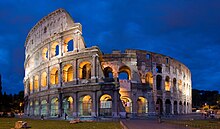

Forbes Traveller released a ranking of the world's 50 most visited tourist attractions in 2007, including both international and domestic tourists.[6] The following are the Top 10 attractions, followed by some other famous sites included within the list of the 50 most visited:[7] It is noticeable that 4 out of the top 5, and 6 out of the top 10, are in the North America continent.
| World's ranking |
Tourist attraction | City and country | Number of visitors (millions) |
| 1 | Times Square | New York City, |
35 |
| 2 | National Mall & Memorial Parks | Washington, D.C., |
25 |
| 3 | Walt Disney World's Magic Kingdom | Lake Buena Vista, Orlando, |
16.6 |
| 4 | Trafalgar Square | London, |
15 |
| 5 | Disneyland | Anaheim, CA, |
14.7 |
| 6 | Niagara Falls | Ontario, |
14 |
| 7 | Fisherman's Wharf & Golden Gate Natl. R. Area | San Francisco,CA, |
13 |
| 8 | Tokyo Disneyland & Tokyo DisneySea | Tokyo, |
12.9 |
| 9 | Notre-Dame de Paris | Paris, |
12 |
| 10 | Disneyland Paris | Paris, |
10.6 |
| 11 | The Great Wall of China | Badaling, |
10 |
| 18 | Eiffel Tower | Paris, |
6.7 |
| 31 | Grand Canyon | Arizona, |
4.4 |
| 36 | Statue of Liberty | New York, |
4.24 |
| 37 | The Vatican and its museums | Rome, |
4.2 |
| 39 | The Colosseum | Rome, |
4 |
| 47 | Giza Pyramids | Cairo, |
3 |
| 50 | Taj Mahal | Agra, |
2.4 |
History
Wealthy people have always traveled to distant parts of the world to see great buildings or other works of art, to learn new languages, to experience new cultures, or to taste new cuisine. As long ago as the time of the Roman Republic places such as Baiae were popular coastal resorts for the rich.

The word tourism was used by 1811 and tourist by 1840.[8] In 1936 the League of Nations defined foreign tourist as someone travelling abroad for at least twenty-four hours. It successor, the United Nations amended this definition in 1945 by including a maximum stay of six months.[9]
Pre twentieth century
The history of European tourism can perhaps be said to originate with the medieval pilgrimage. Although undertaken primarily for religious reasons, the pilgrims in the Canterbury Tales quite clearly saw the experience as a kind of holiday (the term itself being derived from the 'holy day' and its associated leisure activities). Pilgrimages created a variety of tourist aspects that still exist - bringing back souvenirs, obtaining credit with foreign banks (in medieval times utilizing international networks established by Jews and Lombards), and making use of space available on existing forms of transport (such as the use of medieval English wine ships bound for Vigo by pilgrims to Santiago de Compostela). Pilgrimages are still important in modern tourism - such as to Lourdes or Knock in Ireland. But there are secular equivalents - Graceland and the grave of Jim Morrison in Père Lachaise Cemetery.
During the 17th century, it became fashionable in England to undertake a Grand Tour. The sons of the nobility and gentry were sent upon an extended tour of Europe as an educational experience. The 18th century was the golden age of the Grand Tour, and many of the fashionable visitors were painted at Rome by Pompeo Batoni. A modern equivalent of the Grand Tour is the phenomenon of the backpacker, although cultural holidays, such as those offered by Swan Hellenic, are also important.
Health tourism
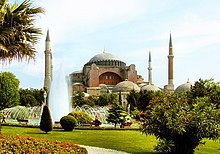
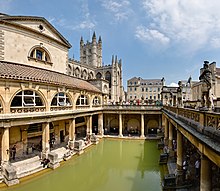
Health tourism has long existed, but it was not until the eighteenth century that it became important. In England, it was associated with spas, places with supposedly health-giving mineral waters, treating diseases from gout to liver disorders and bronchitis. The most popular resorts were Bath, Cheltenham, Buxton, Harrogate, and Tunbridge Wells. Visits to take 'the waters' also allowed the visitors to attend balls and other entertainments. Continental Spas such as Carlsbad (Karlovy Vary) attracted many fashionable travellers by the nineteenth century.
Creative tourism
Creative tourism has existed as a form of cultural tourism since the early beginnings of tourism itself. Its European roots date back to the time of the Grand Tour, which saw the sons of aristocratic families traveling for the purpose of (mostly interactive) educational experiences. More recently, creative tourism has been given its own name by Crispin Raymond and Greg Richards, who as a member of the Association for Tourism and Leisure Education (ATLAS) has directed a number of projects for the European Commission, including cultural tourism, crafts tourism or sustainable tourism. They have defined "creative tourism" as tourism related to the active participation of travelers in the culture of the host community, through interactive workshops and informal learning experiences.
Meanwhile, the concept of creative tourism has been picked up by high-profile organizations such as UNESCO, who through the Creative Cities Network have endorsed creative tourism as an engaged, authentic experience that promotes an active understanding of the specific cultural features of a place.
Leisure travel
Leisure travel was associated with the industrialisation of United Kingdom – the first European country to promote leisure time to the increasing industrial population. Initially, this applied to the owners of the machinery of production, the economic oligarchy, the factory owners, and the traders. These comprised the new middle class. Cox & Kings were the first official travel company to be formed in 1758. Later, the working class could take advantage of leisure time. [citation needed]
The British origin of this new industry is reflected in many place names. At Nice, France, one of the first and best-established holiday resorts on the French Riviera, the long esplanade along the seafront is known to this day as the Promenade des Anglais; in many other historic resorts in continental Europe, old well-established palace hotels have names like the Hotel Bristol, the Hotel Carlton or the Hotel Majestic - reflecting the dominance of English customers.
Many tourists do leisure tourism in the tropics both in the summer and winter. It is often done in places such as Cuba, The Dominican Republic, Thailand, North Queensland in Australia and Florida in the United States.
Winter tourism

Winter sports were largely invented by the British leisured classes, initially at the Swiss village of Zermatt (Valais), and St Moritz in 1864. The first packaged winter sports holidays took place in 1902 at Adelboden, Switzerland. Winter sports were a natural answer for a leisured class looking for amusement during the coldest season.
Major ski resorts are located in various mainland European countries, Canada, the United States, Australia, New Zealand, Japan, Korea, Chile and Argentina.
Mass tourism

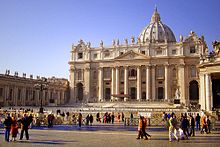

Mass travel could only develop with improvements in technology allowed the transport of large numbers of people in a short space of time to places of leisure interest, and greater numbers of people began to enjoy the benefits of leisure time.
In the United States, the first great seaside resort, in the European style, was Atlantic City, New Jersey, and Long Island.
In Continental Europe, early resorts included Ostend (for the people of Brussels), and Boulogne-sur-Mer (Pas-de-Calais) and Deauville (Calvados) (for Parisians).
International
The examples and perspective in this article may not represent a worldwide view of the subject. |
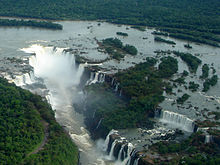

Increasing speed on railways meant that the tourism industry could develop internationally. To this may be added the development of sea travel. By 1901, the number of people crossing the English Channel from England to France or Belgium had passed 0.5 million per year. Shipping companies were anxious to fill cabin space that was under-utilized.
For example, P&O found that the majority of their passengers for India and the Far East joined the ship at Marseilles. Consequently, they marketed holidays based upon sea trips from London to Lisbon and Gibraltar. Other companies diverted their older ships to operate cruises in the summer months.
However, the real age of international mass travel began with the growth of air travel after World War II. In the immediate post-war period, there was a surplus of transport aircraft, such as the popular and reliable Douglas Dakota, and a number of ex military pilots ready to fly them. They were available for charter flights, and tour operators began to use them for European destinations, such as Paris and Ostend.
Vladimir Raitz pioneered modern package tourism when on 20 May 1950 his recently founded company, Horizon, provided arrangements for a two-week holiday in Corsica. For an all inclusive price of £32.10s.-, holiday makers could sleep under canvas, sample local wines and eat a meal containing meat twice a day - this was especially attractive due to the continuing austerity measures in post-war United Kingdom. Within ten years, his company had started mass tourism to Palma (1952), Lourdes (1953), Costa Brava (1954), Sardinia (1954), Minorca (1955), Porto (1956), Costa Blanca (1957) and Costa del Sol (1959).

These developments coincided with a significant increase in the standard of living in Britain. Further, the contribution of affordable air travel in combination with the package tour enabled international mass tourism to develop. The postwar introduction of an international system of airline regulation was another important factor. The bilateral agreements at the heart of the system fixed seat prices, and airlines could not fill blocks of empty seats on underused flights by discounting. [citation needed]
Spain and the Balearic Islands became major tourist destinations, and development probably peaked in the 1980s. At the same time, British tour operators developed the Algarve in Portugal. The continuing search for new, cheaper, destinations spread mass tourism to the Greek Islands, Italy, Tunisia, Morocco, Turkey, and more recently Croatia, Bosnia and Herzegovina .
For someone living in greater London, Venice today is almost as accessible as Brighton was 100 years ago. Consequently, the British seaside resort experienced a marked decline from the 1970s onwards. Some, such as New Brighton, Merseyside have disappeared. Others have reinvented themselves, and now cater to daytrippers, the weekend break market or business conferences.
Recent developments

There has been an upmarket trend in the tourism over the last few decades, especially in Europe where international travel for short breaks is common. [citation needed] Tourists have higher levels of disposable income and greater leisure time and they are also better-educated and have more sophisticated tastes. There is now a demand for a better quality products, which has resulted in a fragmenting of the mass market for beach vacations; people want more specialised versions, such as Club 18-30, quieter resorts, family-oriented holidays, or niche market-targeted destination hotels. As well, people are likely to take more than one short break holiday each year.
The developments in technology and transport infrastructure, such as Jumbo jets and low-cost airlines, have made many types of tourism more affordable. There have also been changes in lifestyle, such as retiree-age people who sustain year round tourism. This is facilitated by internet sales of tourism products. Some sites have now started to offer dynamic packaging, in which an inclusive price is quoted for a tailor-made package requested by the customer upon impulse.
There have been a few setbacks in tourism, such as the September 11, 2001 attacks and terrorist threats to tourist destinations such as Bali and European cities. Some of the tourist destinations, including the beach resorts of Cancún have lost popularity due to shifting tastes. In this context, the excessive building and environmental destruction often associated with traditional "sun and beach" tourism may contribute to a destination's saturation and subsequent decline. Spain's Costa Brava, a popular 1960s and 1970s beach location is now facing a crisis in its tourism industry. On December 26, 2004 a tsunami, caused by the 2004 Indian Ocean earthquake hit Asian countries bordering the Indian Ocean, and also the Maldives. Tens of thousands of lives were lost, and many tourists died. This, together with the vast clean-up operation in place, has stopped or severely hampered tourism to the area.
The terms tourism and travel are sometimes used interchangeably. In this context travel has a similar definition to tourism, but implies a more purposeful journey. The terms tourism and tourist are sometimes used pejoratively, to imply a shallow interest in the cultures or locations visited by tourists.
Eco-tourism
Sustainable tourism is becoming more popular as people start to realize the devastating effects poorly planned tourism can have on communities. Receptive tourism is now growing at a very rapid rate in many developing countries, where it is often the most important economic activity in local GDP.
Medical tourism
When there is a significant price difference between countries for a given medical procedure particularly in South East Asia, India and Eastern Europe or where there are different regulatory regimes between countries in relation to particular medical procedures (eg dentistry) travelling to take advantage of the price or regulatory differences is often referred to as "medical tourism".
Creative tourism
More recently, creative tourism has gained popularity as a form of cultural tourism, drawing on active participation by travelers in the culture of the host communities they visit. Several countries offer examples of this type of tourism development, including the United Kingdom, Spain, Italy and New Zealand.
Adventure tourism
Also tourists are looking for an adventure when they travel, see the destination more like a local would experience it. [Private tour guides] are an excellent way to get fast insight into a country and also help locals earn an income.
In recent years, second holidays or vacations have become more popular as people's discretionary income increases. [citation needed] Typical combinations are a package to the typical mass tourist resort, with a winter skiing holiday or weekend break to a city or national park.
Dark tourism
One emerging area of special interest tourism has been identified by Lennon and Foley (2000) as "dark" tourism. This type of tourism involves visits to "dark" sites such as battlegrounds, scenes of horrific crimes or acts of genocide, for example concentration camps. Dark tourism poses severe ethical and moral dilemmas: should these sites be available for visitation and, if so, what should the nature of the publicity involved be. Dark tourism remains a small niche market driven by varied motivations, such as mourning, remembrance, macabre curiosity or even entertainment. Its early origins are rooted in fairgrounds and medieval fairs.[10]
Growth
The World Tourism Organization (UNWTO) forecasts that international tourism will continue growing at the average annual rate of 4 %.[11] By 2020 Europe will remain the most popular destination, but its share will drop from 60% in 1995 to 46%. Long-haul will grow slightly faster than intraregional travel and by 2020 its share will increase from 18% in 1995 to 24%.
With the advent of e-commerce, tourism products have become one of the most traded items on the internet. Tourism products and services have been made available through intermediaries, although tourism providers (hotels, airlines, etc.) can sell their services directly. This has put pressure on intermediaries from both on-line and traditional shops.
It has been suggested there is a strong correlation between Tourism expenditure per capita and the degree to which countries play in the global context.[12] Not only as a result of the important economic contribution of the tourism industry, but also as an indicator of the degree of confidence with which global citizens leverage the resources of the globe for the benefit of their local economies. This is why any projections of growth in tourism may serve as an indication of the relative influence that each country will exercise in the future.
Space tourism is expected to "take off" in the first quarter of the 21st century, although compared with traditional destinations the number of tourists in orbit will remain low until technologies such as a space elevator make space travel cheap.
Technological improvement is likely to make possible air-ship hotels, based either on solar-powered airplanes or large dirigibles. Underwater hotels, such as Hydropolis, expected to open in Dubai in 2009, will be built. On the ocean tourists will be welcomed by ever larger cruise ships and perhaps floating cities.
Some futurists expect that movable hotel "pods" will be created that could be temporarily erected anywhere on the planet, where building a permanent resort would be unacceptable politically, economically or environmentally.
Negative impacts
Attracting a high volume of tourists can have negative impacts, such as the impact of 33 million tourists a year on the city of New York,[13] or the potential to impact fragile environments,[14] or the impact of the December 26, 2004 tsunami on the tourists themselves.[15] The environment can be affected negatively by cruise ship pollution in many ways, including ballast water discharge, and by pollution from aircraft.
See also
- Backpacking (travel)
- Eco-tourism
- Hospitality industry
- Hospitality management studies
- Hospitality Services
- Hotel
- Hotel management
- List of vacation resorts
- List of types of lodging
- Package holiday
- Passport
- Pilgrimage
- Resort town
- Sustainable tourism
- Tour guide
- Tourism by country
- Tourism geography
- Tourism in literature
- Tourism technology
- Tourist trap
- Transport
- Travel agency
- Travel and Tourism Competitiveness Report
- World Tourism Organization
- World-Point Academy of Tourism
- Accessible Tourism
- Township tourism
- Rural tourism
References
- ^ a b c "UNWTO Tourism Highlights, Edition 2007" (PDF). World Tourism Organization. 2007. Retrieved 2008-03-29.
- ^ "World Tourism Barometer (p.8)" (PDF). World Tourism Organization. 2007. Retrieved 2008-03-29.
- ^ Tourism Directorate (France) (2007). "Key facts on tourism 2007 Edition" (PDF).
{{cite web}}: Unknown parameter|accessadte=ignored (help) - ^ Werner Hunziker and Kurt (1941). Grundriss der allgemeinen Fremdenverkehrslehre. OCLC # 69064371.
- ^ International Association of Scientific Experts in Tourism. "The AIEST, its character and aims". Retrieved 2008-03-29.
- ^ Forbes Traveller (2007-04-25). "Top 50 Most Visited Tourist Attractions". Retrieved 2008-03-29.
{{cite web}}: CS1 maint: date and year (link) - ^ The Hopeful Traveler (2007-07-29). "Forbes Traveler 50 Most Visited Tourist Attractions". Retrieved 2008-03-29. See the complete Top 50 list at this website
- ^ "Online Etymology Dictionary: tour". Retrieved 2008-03-01.
- ^ Theobald, William F. (1998). Global Tourism. pp. p. 10. ISBN 0750640227.
{{cite book}}:|pages=has extra text (help) - ^ Tourism Principles and Practice, C. Cooper, J. Fletcher, A. Fyall, D. Gilbert, S. Wanhill, Pearson Education, Third edition, Madrid 2005
- ^ "Long-term Prospects: Tourism 2020 Vision". World Tourism. 2004.
- ^ "airports & tourists". Global Culture. 2007.
- ^ Kirby, David (September 27, 1998). "The Tourist Trap; With All Those Visitors Trampling the Welcome Mat, Can New York Be the Host With the Most for Everyone?" (Web). News Article. The New York Times. Retrieved 2007-03-21.
- ^ Nicholls, Henry (Wednesday April 19, 2006). "The tourist trap (The Galapagos islands are the world's prime eco-tourism destination. Now the sheer number of visitors is endangering their future )" (Web). News article. Guardian. Retrieved 2007-03-21.
{{cite web}}: Check date values in:|date=(help) - ^ Kurlantzick, Joshua (Sunday, January 9, 2005). "The True Meaning of the Tourist Trap" (Web). News article. The Washington Post. Retrieved 2007-03-21.
{{cite web}}: Check date values in:|date=(help)
External links
- Tourism: OECD Centre for Entrepreneurship, SMEs and Local Development A valuable resource for statistics and information on international trends in tourism and tourism policies.
- Rural Tourism Resources USDA, National Agricultural Library, Rural Information Center.
- Promoting Tourism in Rural America. USDA, National Agricultural Library, Rural Information Center. 2004.
- Rural Tourism. USDA, Cooperative State Research, Education and Extension Service.
- Template:PDFlink. By Chad Wilkerson. Economic Review, Third Quarter 2003. Federal Reserve Board in Kansas.
- Economic Research: Economic Impact of Travel and Tourism. Travel Industry Association of America. 2004.
